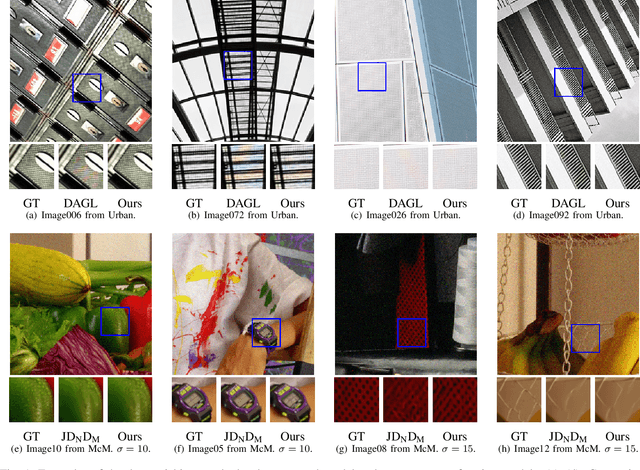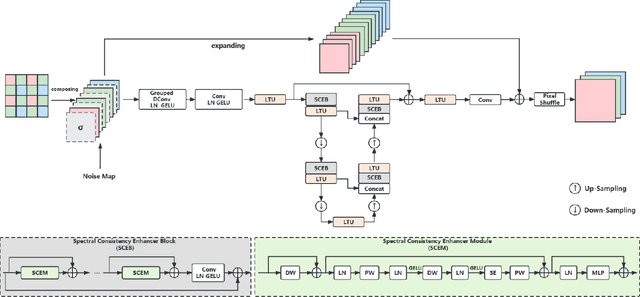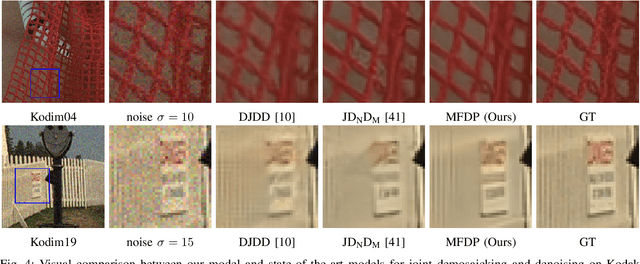Toward Moiré-Free and Detail-Preserving Demosaicking
Paper and Code
May 15, 2023



3D convolutions are commonly employed by demosaicking neural models, in the same way as solving other image restoration problems. Counter-intuitively, we show that 3D convolutions implicitly impede the RGB color spectra from exchanging complementary information, resulting in spectral-inconsistent inference of the local spatial high frequency components. As a consequence, shallow 3D convolution networks suffer the Moir\'e artifacts, but deep 3D convolutions cause over-smoothness. We analyze the fundamental difference between demosaicking and other problems that predict lost pixels between available ones (e.g., super-resolution reconstruction), and present the underlying reasons for the confliction between Moir\'e-free and detail-preserving. From the new perspective, our work decouples the common standard convolution procedure to spectral and spatial feature aggregations, which allow strengthening global communication in the spectral dimension while respecting local contrast in the spatial dimension. We apply our demosaicking model to two tasks: Joint Demosaicking-Denoising and Independently Demosaicking. In both applications, our model substantially alleviates artifacts such as Moir\'e and over-smoothness at similar or lower computational cost to currently top-performing models, as validated by diverse evaluations. Source code will be released along with paper publication.
 Add to Chrome
Add to Chrome Add to Firefox
Add to Firefox Add to Edge
Add to Edge